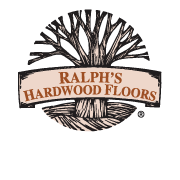Hardwood flooring has a storied history, tracing its roots from the grand homes of
yesteryear to the sleek, modern interiors we admire today. This journey highlights
hardwood’s lasting appeal, versatility, and the way it continually adapts to changing
design trends. Let's take a look at how hardwood flooring has evolved.
Hardwood Flooring in Historical Homes - Origins and Early Uses
Hardwood floors were a practical choice in early American homes. Floor planks were sawn from local woods and installed. These floors featured wide planks and straight installation and were functional, providing a solid daily wear-and-tear foundation.
Craftsmanship and Artistry
As woodworking techniques improved, hardwood flooring began to showcase more
intricate craftsmanship. Parquet floors, with their intricate geometric patterns, became
popular in European manor homes and eventually made their way to America in the
17th and 18th centuries. These detailed designs added an element of artistry and
sophistication to domestic interiors.
The Golden Age and Beyond - Victorian Opulence
During the Victorian era, hardwood floors gained prominence in middle and upper-class
homes. Hardwood became a symbol of luxury, adorned with rich stains and hand carved details. Advances in milling techniques allowed for tighter, more uniform planks,
contributing to a polished and refined aesthetic.
Post-War Simplicity
The post-World War II era saw a shift towards simplicity and functionality in home
design. Hardwood floors remained popular, but the focus moved towards more streamlined, easy-to-install options like pre-finished planks. This period also marked the rise of engineered hardwood, offering the look of solid hardwood at a more accessible level of maintenance and installation.
Hardwood in Modern Spaces - Sleek and Sustainable
Today, hardwood flooring blends tradition with modern innovation. There is a growing
emphasis on sustainable practices, with many opting for reclaimed wood or hardwood
from responsibly managed forests. This adds character to modern spaces and aligns with ecoconscious values.
Customization and Finishes
Modern technology has expanded the range of finishes, stains, and treatments available
for hardwood floors. Homeowners can now choose from various colors and textures,
from classic glossy finishes to trendy matte or distressed looks. Expert installation
ensures that these finishes not only look great but also enhance the durability of the
flooring.
Versatility in Design
Hardwood flooring is more versatile than ever. It’s used in diverse settings, from urban
lofts with a minimalist aesthetic to cozy suburban homes seeking a warm, natural touch.
The adaptability of hardwood allows it to complement a wide range of interior design
styles, making it a timeless choice.
Conclusion
The evolution of hardwood flooring is a testament to its enduring appeal and
adaptability. From the handcrafted planks of historic homes to the diverse, sustainable
options available today, hardwood remains a valued element in home design.
Expert installation and refinishing can enhance its beauty and longevity, making
it is a wise investment for any home.















